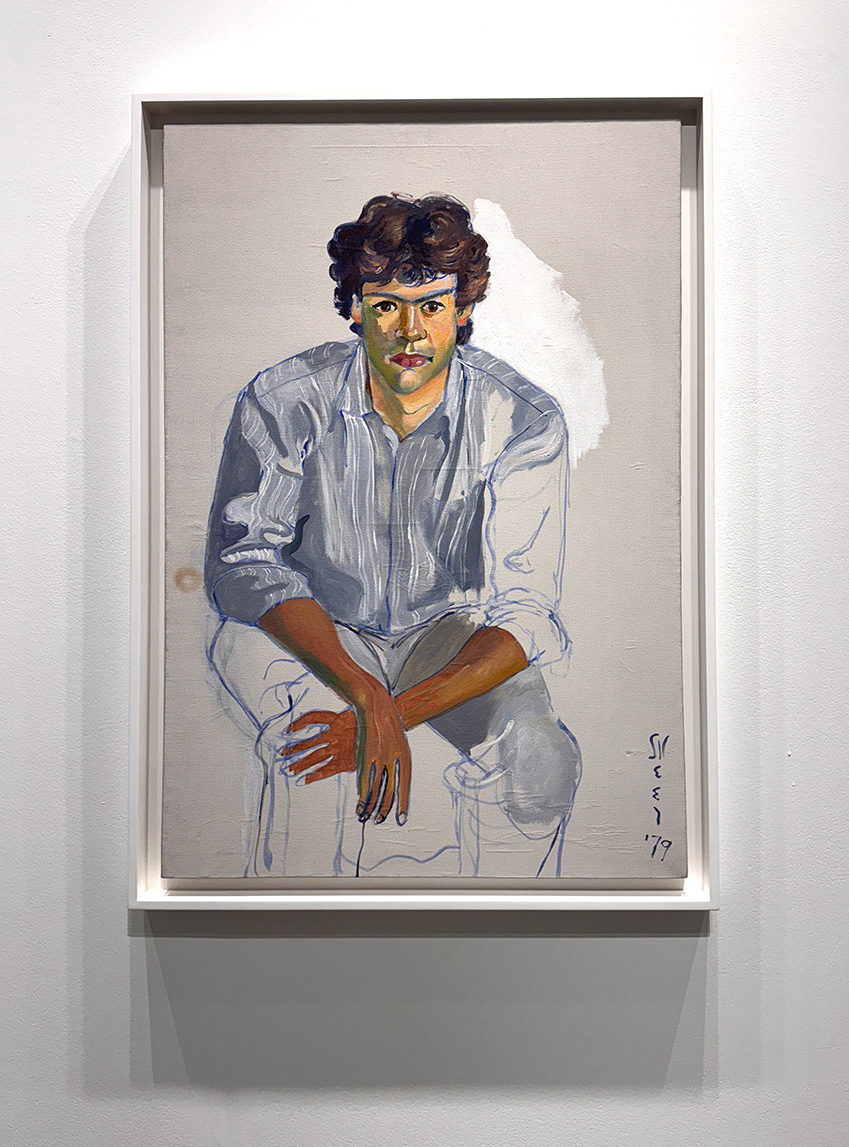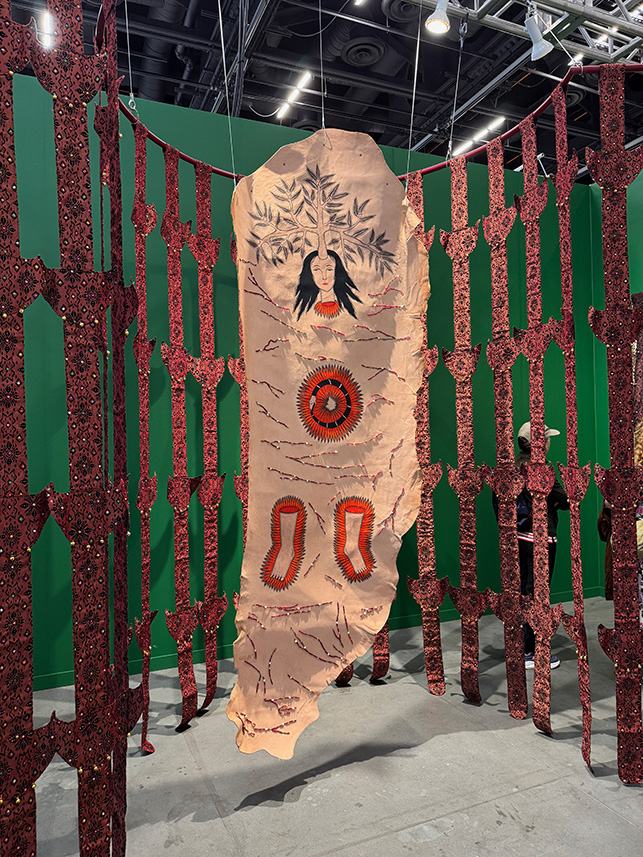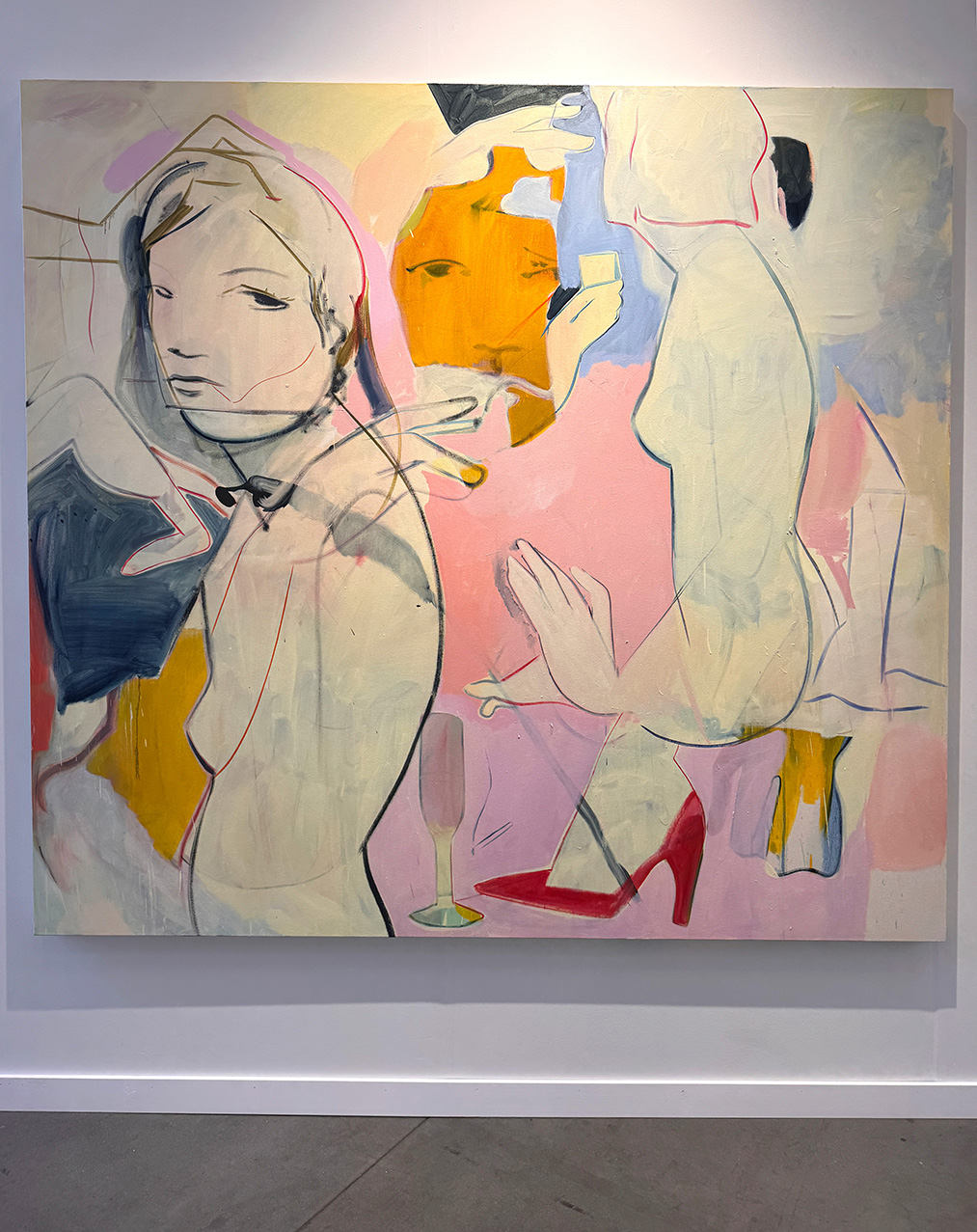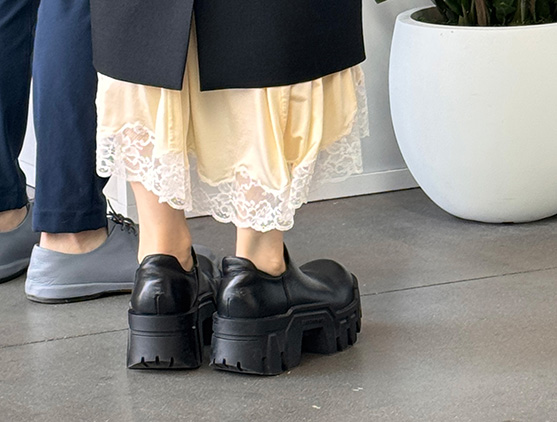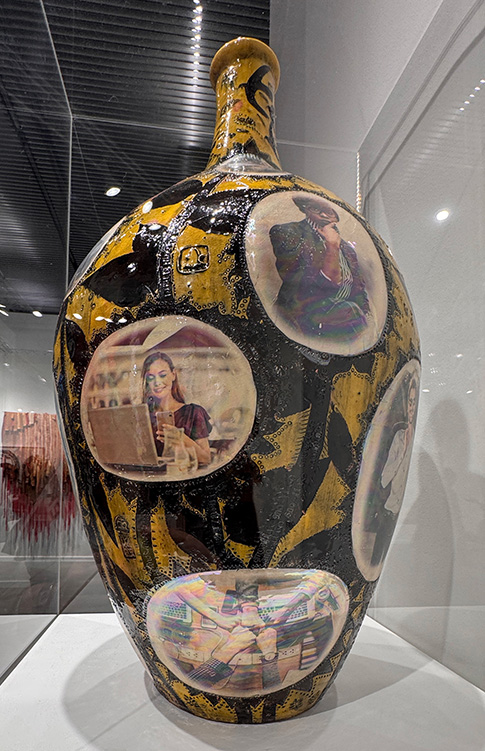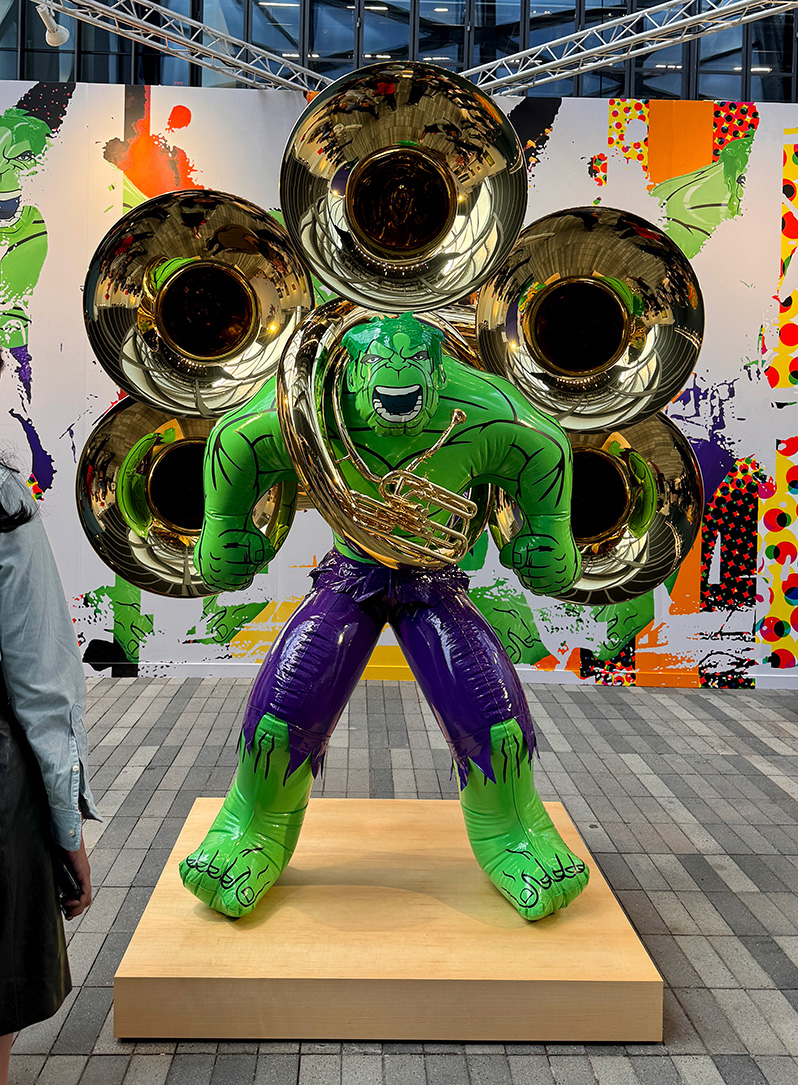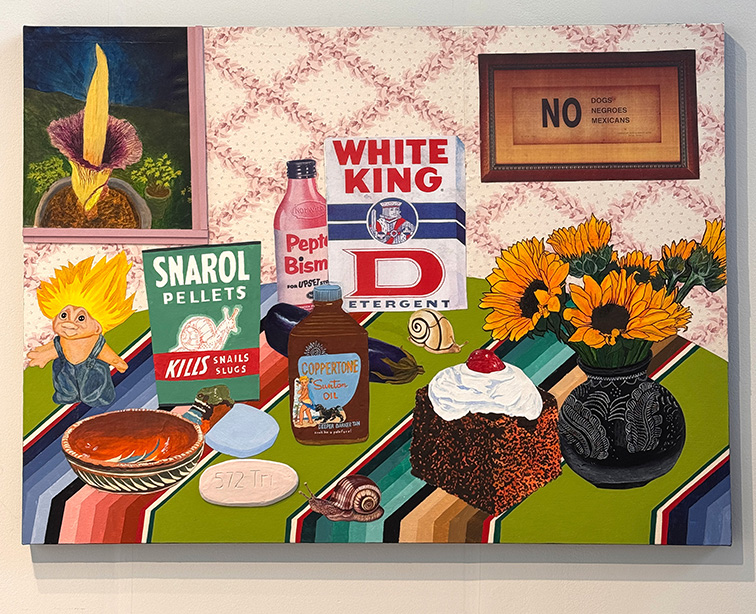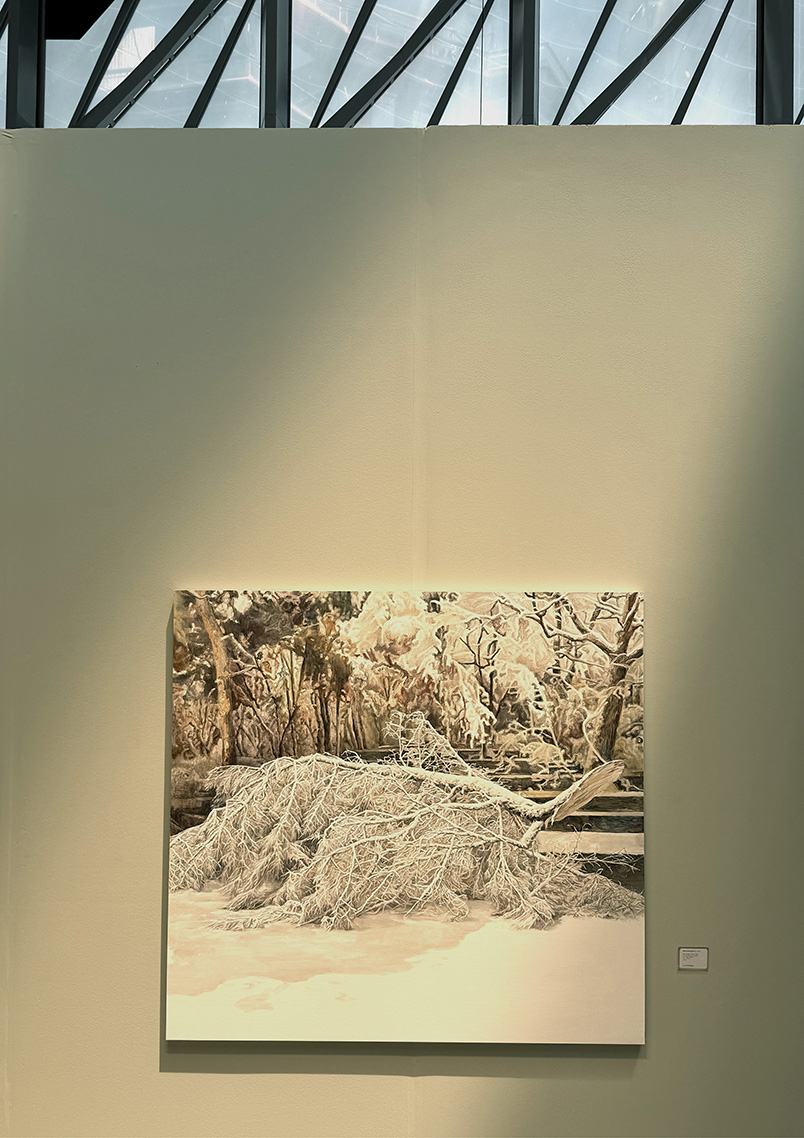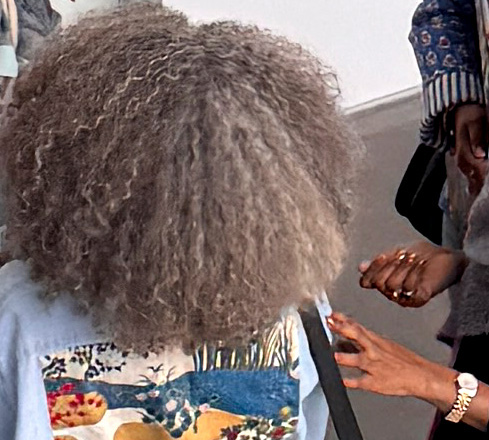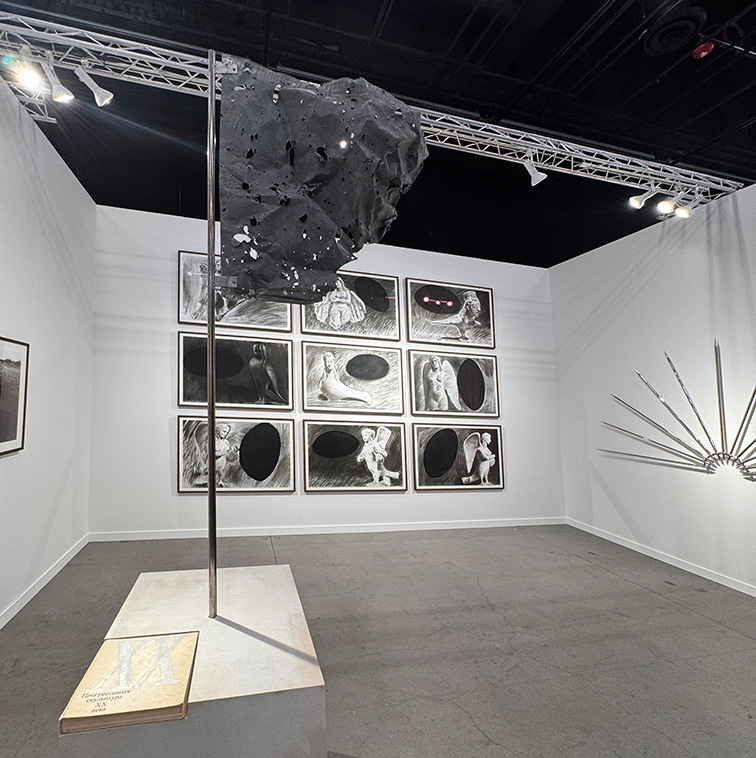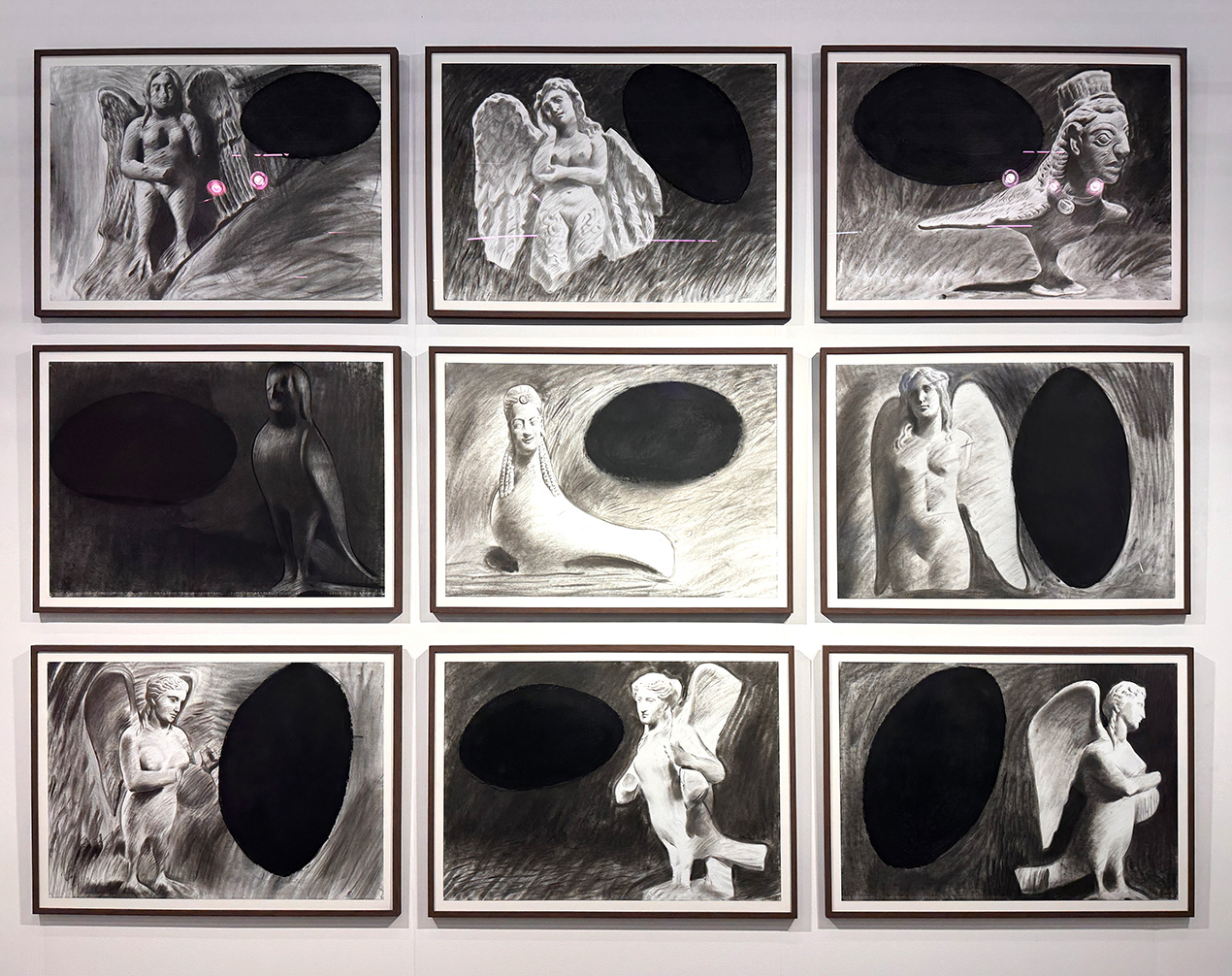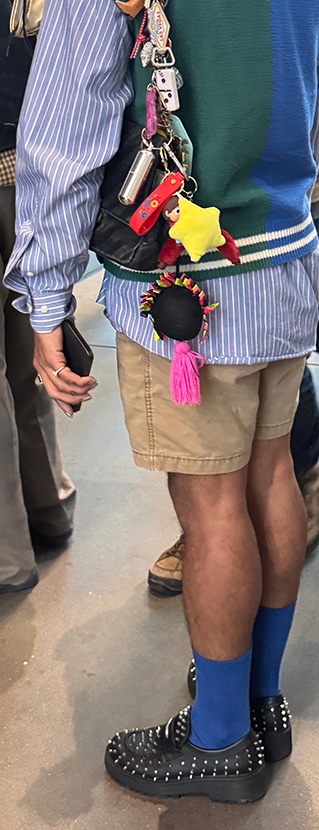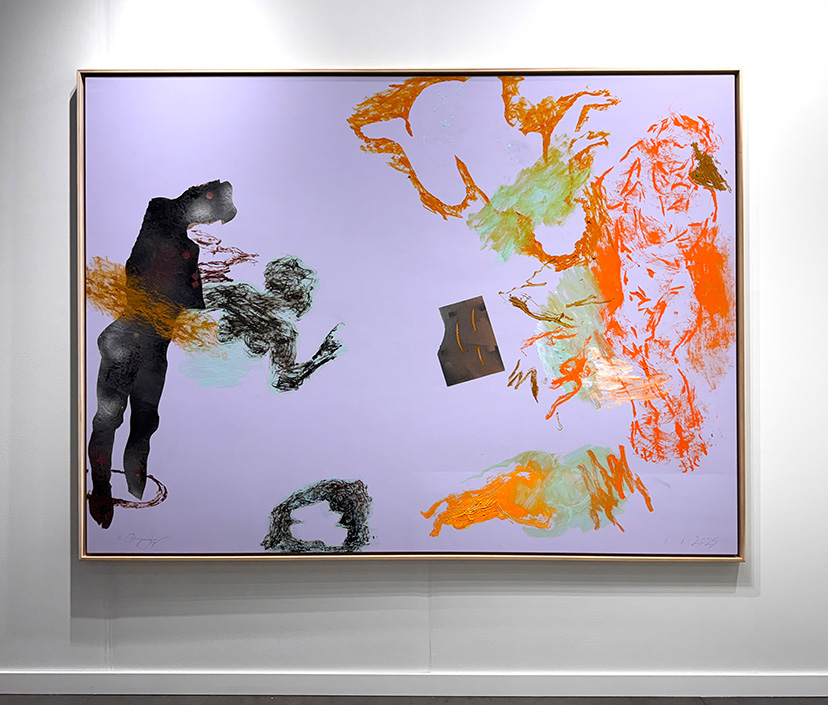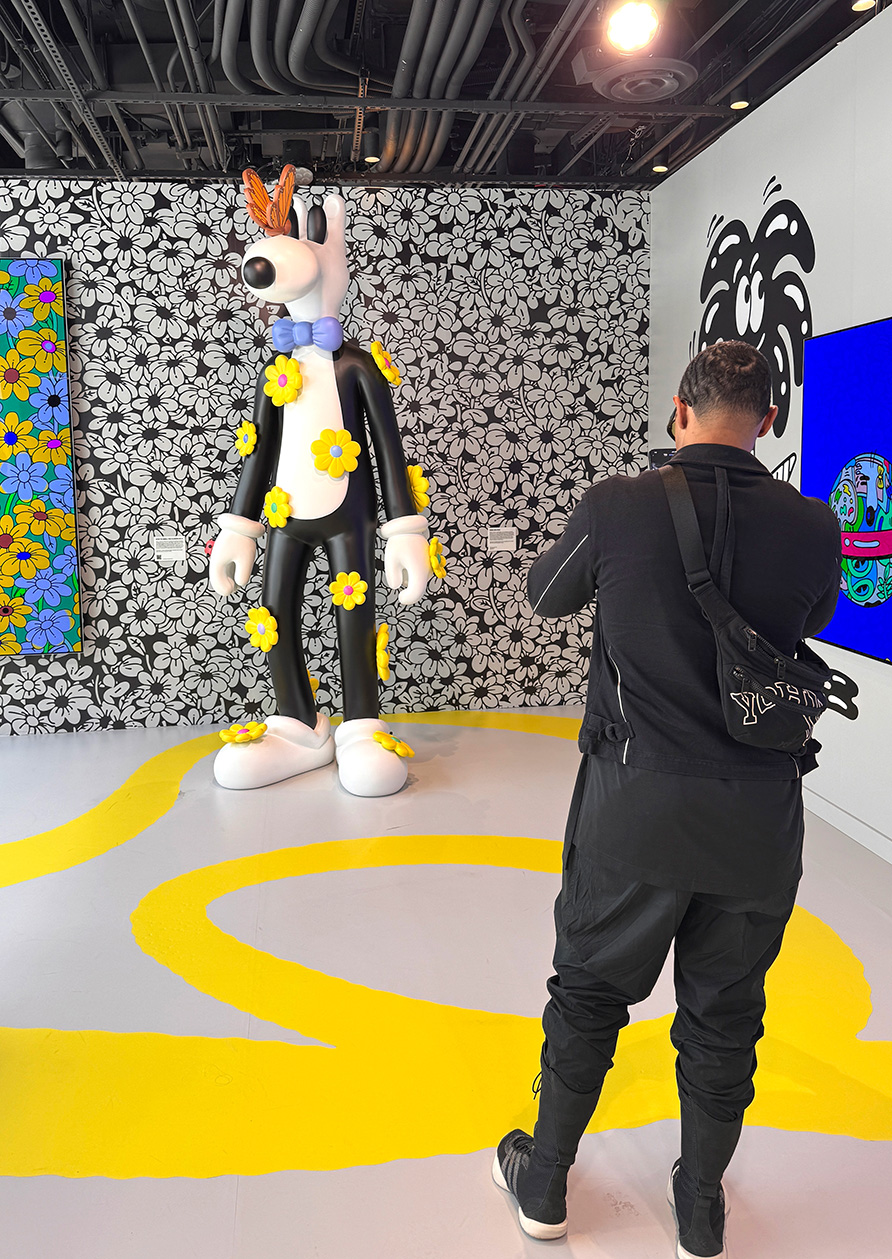
Throw in several excellent art fairs, ranging from “art for billionaires” — as NYC-based artist Victor Rodriguez described one show when I bumped in to him over a Grayson Perry ceramic — to pocket-sized, indie pop-up fairs, and all things start to feel almost overwhelmingly possible to the point of FOMO.
I started at Frieze at The Shed: a small show in the grand scheme of art fairs, featuring 66 galleries from more than 20 countries. A beautifully laid-out, airy and bright venue from a visitor’s perspective, but as one gallerist told me in a very polite British fashion after a conversation about which shoes were the best for standing on The Shed’s unforgiving concrete floors for five days, “a quite challenging space to work from.”
The Glasgow-based gallery he represented had built a makeshift storage room to give them the ability to quickly switch out works that sold from their main gallery space to avoid squeezing their margins by avoiding the high transport fees to shuttle pieces back and forth from their offsite storage. It was a long, narrow wedge-shaped space which made viewers get up close and personal with the handful of paintings hung within, and was closed off by a fire engine red door covered in stickers by British artist Jeremy Deller. Styled to look like a teenager’s bedroom door, it included a sticker proclaiming “Prince Harry Kills Me”, a version of Deller’s infamous work that was left out of the British Pavilion at Venice Biennale in 2013, over fears that it could be misconstrued in environments where the British army was then deployed and perceived to be disrespectful of those who had lost their lives. The work actually relates to the shooting of two protected and endangered hen harriers over the Sandringham estate on a day when Prince Harry and a friend were the only two people known to be in the area with guns.
Deller’s work, however humorous, often constitutes a form of opposition to the hegemonic logic of the day and aims to reconfigure Britons’ understanding of their culture. The downside is that it’s often misconstrued or simply misunderstood by the very people it's speaking about.
In the Focus section of Frieze — a section dedicated to galleries under 12 years old each showing a solo presentation — Voloshyn Gallery presented Kyiv Siren, by Ukrainian artist Nikita Kadan. Exploring themes of memory, history, and violence in the context of the ongoing war in his homeland, the centerpiece of the presentation was a set of 9 large charcoal works. Playing with the meaning of “siren”, the works show images of sirens from Greek and Roman mythology drawn from when the Ukrainian Black Sea Coast was home to ancient Greek colonies. Each siren is threatened by a looming black ellipse above them. Evocative of speech bubbles that visualize the singing that drew sailors to their ruin, Kadan has drawn parallels to the air raid sirens now commonplace in present-day Ukraine. In both cases, when the siren’s song ends, tragedy follows.
France-Lise McGurn’s painting, Office Party, caught my attention initially purely on aesthetics (her style is totally my jam, personally. Her Alice Neel vibes walk that line between humanistic and elegantly abstract), but also my sense of humor from the chunk of my professional life spent in the corporate world. No one at McGurn’s office party looks like they’re having a good time: the expressions on their faces, their postures, and gestures of their hands range from outright bored to distracted, maybe wishing the Uber to home would hurry up. The carefully planned color palette speaks of the forced fun events that our corporate overlords often think we should be enthusiastically grateful for.
The aforementioned Grayson Perry ceramic, Searching for Authenticity, required a deeper look as well. The yellow and black vase is in a classic shape with hand painted vines and swallows overlaid with desaturated photographs. While Perry’s statement about the beaming individuals in the photos who are blissfully happy at work or at sun-kissed leisure touches on the slippery concepts of meaning and significance, life and lifestyle — what can be authentically experienced or simply acquired — focuses on the narcissistic Instagram culture that when people go on holiday they want to appear in the photographs they have seen in the brochure, my commercial creative experience immediately saw something else.
The images look like the stock images we’ve scrolled through countless times: bland, fake, forced, and inauthentic. Woman Laughing With Salad! Impossibly Shiny Happy Family Frolicking In Nature! Corporate High Fives! Fellow graphic designers and art directors, I KNOW YOU KNOW WHAT I MEAN. We could collectively create a piece with the same materials called Searching for Brand Authenticity.
I was thrilled to see a near-solo show from Joey Terrill, an artist and social advocate working across zine-making, performance, printmaking, collage, and painting. His work has always explored the queer identity in the context of mundane, everyday life and his Chicano community. Sustiva and assorted HIV prescription cocktails are depicted along with boxes of laundry detergent, bottles of sun tan lotion, and bouquets of sunflowers atop a Mexican serape tablecloth. Painted with his trademark bright pop colors and a flat, collage-like technique, each work memorializes what it is to live with a treatable but still incurable life-threatening illness. Terrill has been influenced by Sister Corita Kent, the famously socially progressive artist nun he studies under, and I’m looking forward to the day when their work gets a combined retrospective.
Before I checked out the 8th floor that housed lounges showcasing artist-brand collaborations, I asked my tour guide, Fea, a young contemporary artist and writer, what else is a must-see in her opinion. She did give me her excellent picks, but not before not quite concealing an eye roll at the gaudy, in-your-face Jeff Koons show. The three musical sculptures — depictions of the Incredible Hulk that resemble balloons but are, in fact, polychromed steel — are impossible to miss and difficult to appreciate aside from the fact that Koons (and the Gagosian) can successfully get away with anything. The talk is that each Hulk is priced at around $3 million, easily making them among the priciest works on view at the fair.
All things seem possible in May, indeed.
